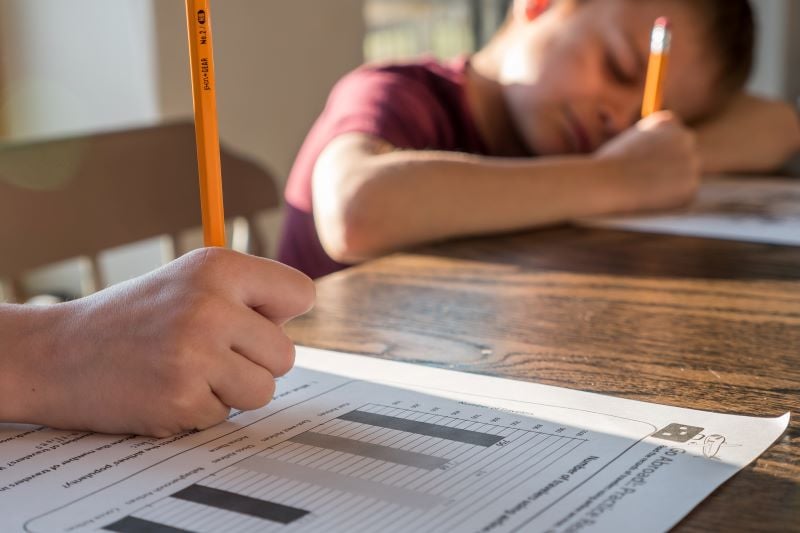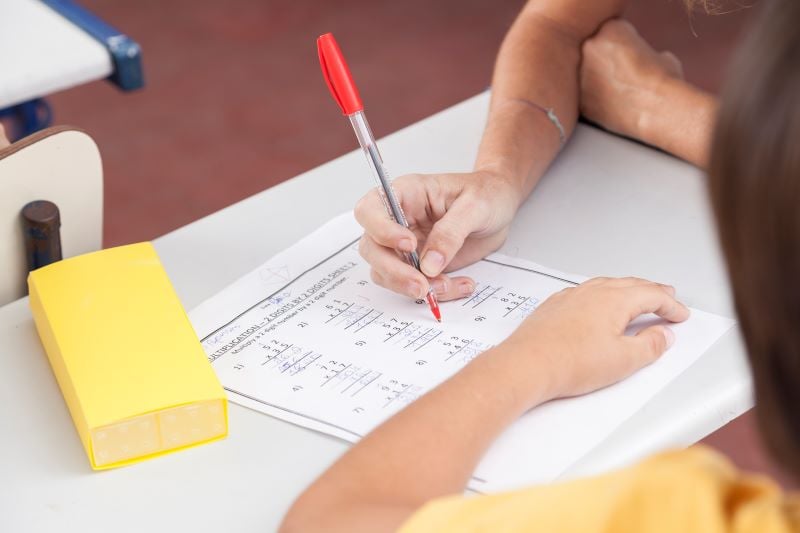 Possibly one of the most universal experiences for students in the United States is the stress of standardized testing. Days are spent going over test material, nights are spent cramming for tests, and on testing day, students everywhere are expected to regurgitate what they've been taught, and their performance can have a far-reaching impact on their schooling experience.
Possibly one of the most universal experiences for students in the United States is the stress of standardized testing. Days are spent going over test material, nights are spent cramming for tests, and on testing day, students everywhere are expected to regurgitate what they've been taught, and their performance can have a far-reaching impact on their schooling experience.
But is standardized testing really the best way to gauge student proficiency? Recent studies have suggested that, while standardized testing may have a place, students perform better in classrooms that focus on individualized teaching experiences, while struggling in classrooms with a greater emphasis on test-based learning.
The Argument for Reducing Standardized Testing
Is it worth it to remove standardized testing in the classroom? Numerous studies say yes. In an experiment run by a school district in Pennsylvania, students taught in an environment that eliminated standardized testing in daily use ultimately had better grades than those who did not. When they took state-mandated standardized tests, they performed significantly better than their counterparts statewide, with average scores as much as 9 percent higher than their peers in certain subjects.
How can a lack of standardized testing lead to such an improvement in performance? The success in the program is accredited to a culture that focuses on mass customized learning to meet children's needs, rather than teaching in a way that solely prepares children for tests. Studies have shown that when students are taught in environments that focus on mass customized learning focused on individual students, children have stronger grasps of the material they are being taught and can apply that knowledge in a variety of ways, while students who are taught only with testing in mind often can't apply their knowledge consistently outside of tests.
How Standardized Tests Can Hurt Students
In addition to the adverse affect standardized testing ultimately has on grades, it can have a negative impact on children as well. When standardized testing is heavily emphasized in schools, children are taught in a way that meet the demands of the test rather than a way that meets the needs of the children. Learning is standardized in such a rigid way that it removes the opportunity for creativity and organic learning experiences in the classroom, which ultimately hurts children's comprehension of the subject and can eliminate the desire for learning.
Young learners especially can be negatively impacted by standardized testing, because this method fails to stimulate their imaginations or curiosity. However, children of all ages are negatively impacted by standardized testing: doing poorly on a test can fundamentally alter their school experience, with graduation testing requirements sometimes forcing children to drop out of schools, gifted lotteries relying on testing scores to determine if a child is qualified, and the risk of school closure of low-performing schools, especially in low-income neighborhoods.
The Role of Standardized Testing in Education
Although using standardized testing as a be-all end-all solution to child education can often hinder education, that doesn't mean that standardized testing has no place in education. Standardized testing is a valuable tool to assess how students are absorbing knowledge compared to their peers and how different schools and districts rank in comparison to one another. Standardized testing can be used to great benefit as a monitoring tool for schools, especially when used in conjunction with individualized teaching to ensure that children are gaining satisfactory skill from their learning experience.
Many countries have reduced the amount of standardized testing in schools to great effect, and now some school districts in America are adopting the same strategy. As the trend progresses, expect to see children learning material in new and creative ways designed to encourage learning for the purpose of understanding rather than learning for the purpose of testing.





